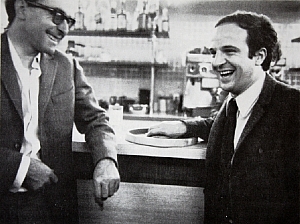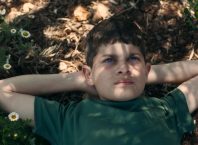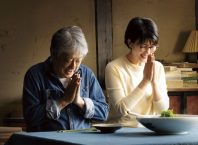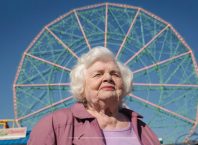There have been a number of new waves in the history of film. The Italian neo-realist wave of the late 40’s (Rossellini, De Sica, Zavattini, early Fellini and Visconti) has possibly left the greatest mark on film history- the most acclaimed national wave of the moment, the Romanian one, is intrinsically tied to it, and the Italians’ politics and methods have defined much of the art cinema since then. But no new wave has captured the imaginations of cinephiles more than the French Nouvelle Vague:: a group of film critics and intellectuals, inspired by both the Italians and the Americans, making their own films on their own terms. Of its figureheads -including Claude Chabrol, Eric Rohmer, Jacques Rivette, Alain Resnais, Jacques Demy, Agnes Varda- two have come to stand in for the entire movement: Jean-Luc Godard and Francois Truffaut. In ‘Two in the Wave’, filmmaker Emmanuel Laurent comes to tell the tale of the relationship of these two giants.
Both were writing for Cahiers du Cinema, both loved the same directors- Renoir, Vigo, Gance, Hitchcock, Welles, Hawkes, and Ford among others- and after a couple of short films, followed their friends Chabrol and Rivette by making their own features. Truffaut came first, with ‘The 400 Blows’, which took the grand prize at the Cannes film festival (which he had been banned from previously for his acerbic writing about the festival’s selections). Then Godard -working from a Truffaut script to which he made major adjustments- made his debut, ‘Breathless’. Then -like all of the major New Wave figures- each went on to create an individual and unique body of work. Truffaut’s career was a roller-coaster of ups and downs, working in relatively traditional forms and genres. Godard, meanwhile, built up a massive body of work, going through several different phases, thrilling, daunting and befuddling many of his followers. Throughout the 60’s, though, they remained friends and were supportive of each other. But in the late 60’s and early 70’s, Godard became more and more radical, devoting his filmmaking to militant Marxism and vitriolic anti-Vietnam sentiments. Their increasingly strained relationship was torn irreparably in 1973, when Godard, after seeing Truffaut’s popular ‘Day for Night’, sent a vitriolic letter to Truffaut and his star, Jean-Pierre Leaud, with the demand that Truffaut fund Godard’s next film to make up for the bourgeois film he made. Truffaut responded with a legendary 20 page letter, the harshness of which ensured that they had practically no contact with each other from that point on. Only after Truffaut’s death in 1984 did Godard attempt to make amends.
For fans of Godard and Truffaut, this documentary with its archive material doesn’t add a great deal of new information. For those unfamiliar, it vividly brings to life the sense of excitement that must have been in the air for film-fans. It is illustrated by beautifully chosen clips from these filmmakers’ seminal films, which, if nothing else, should inspire one to discover or rediscover the vibrant and essential films of these great artists. Even for those familiar, though, this film is worth seeing. Although much of the archive footage has been available in previous documentaries and DVD features, certain images -such as Godard and Truffaut protesting together at the 1968 Cannes festival were new to me. And at the end of the film, director Laurant presents a beautiful tribute to actor Jean-Pierre Leaud. Leaud played the character of Antoine Doinel in five different Truffaut films, starting with ‘The 400 Blows’. He also acted in a number of Godard films. He came to be the face of the Nouvelle Vague, acting as alter-ego for its two most famous directors. In the conflict between the two, Leaud was stuck in the middle, devoted to both- owing his career to Truffat, but declaring that Godard is the best director he’s worked with. This conflict is never resolved, but in ‘Two in the Wave’, Laurant pays final tribute to this remarkable era, and these two giants, through a touching and simple montage- of their star, Jean-Pierre Leaud, aging in film from his mid-teens to his 60’s…and back again. This film may not give new insight on its subjects- but as a tribute to their spirit, one could do a lot worse.
SHLOMO PORATH






